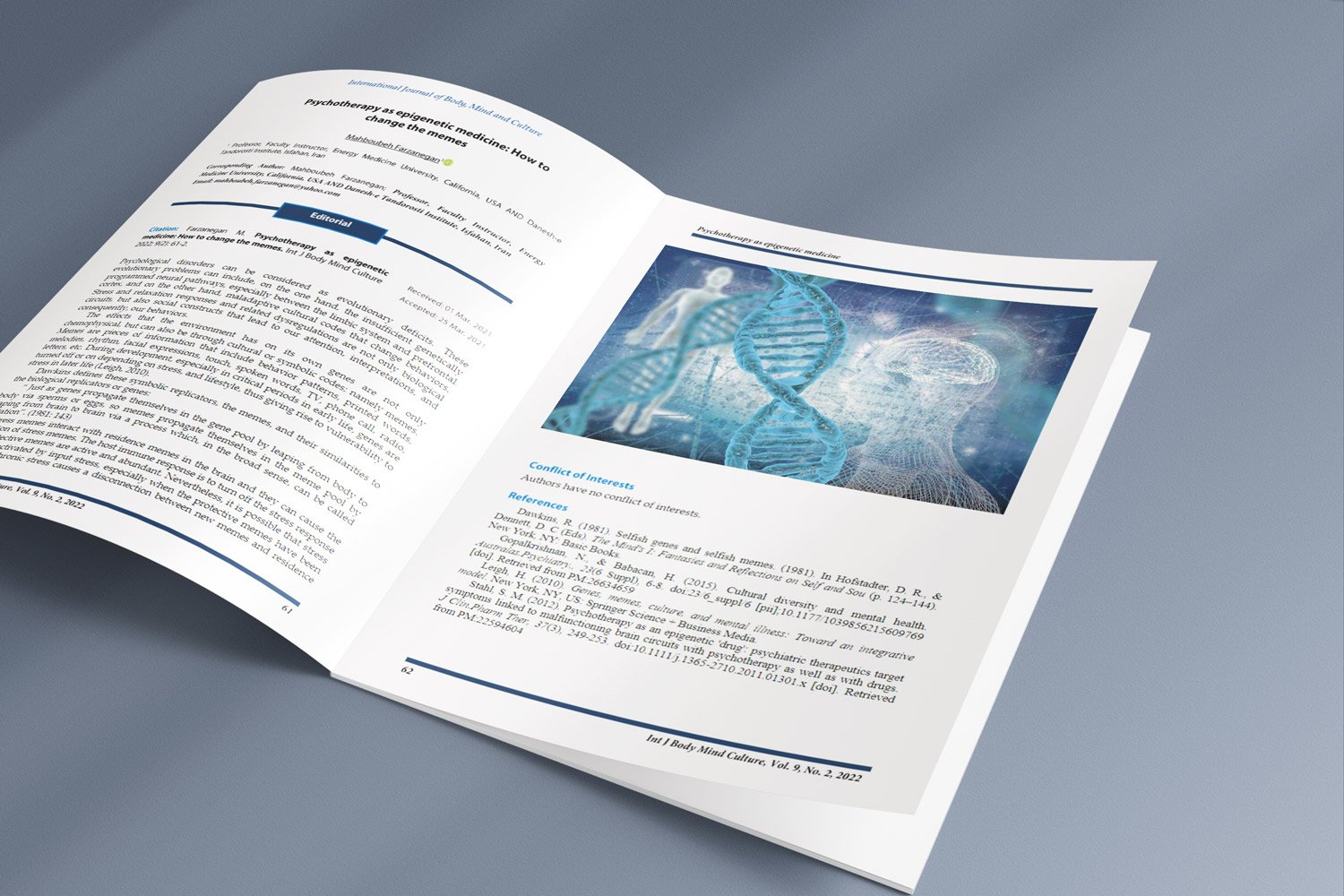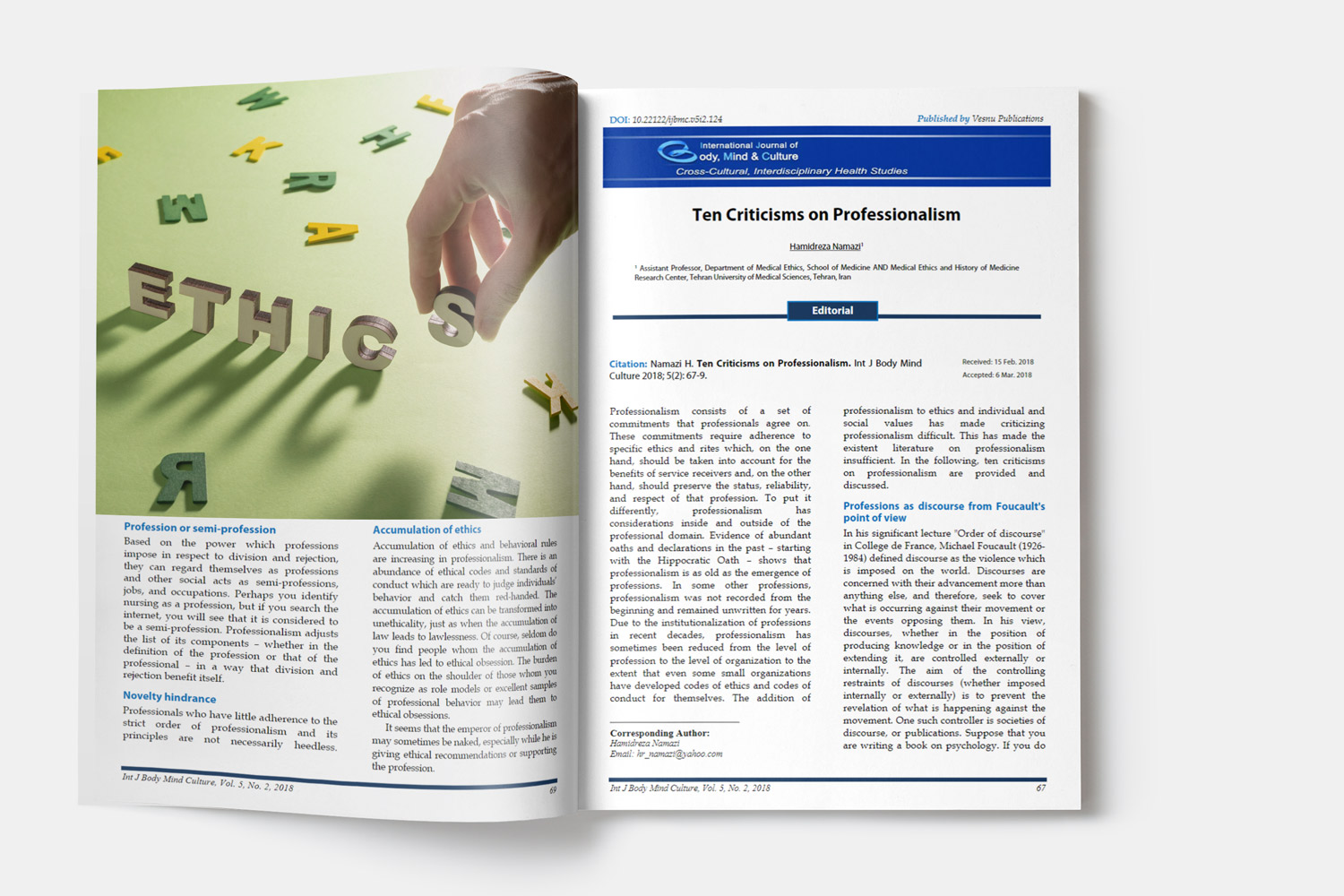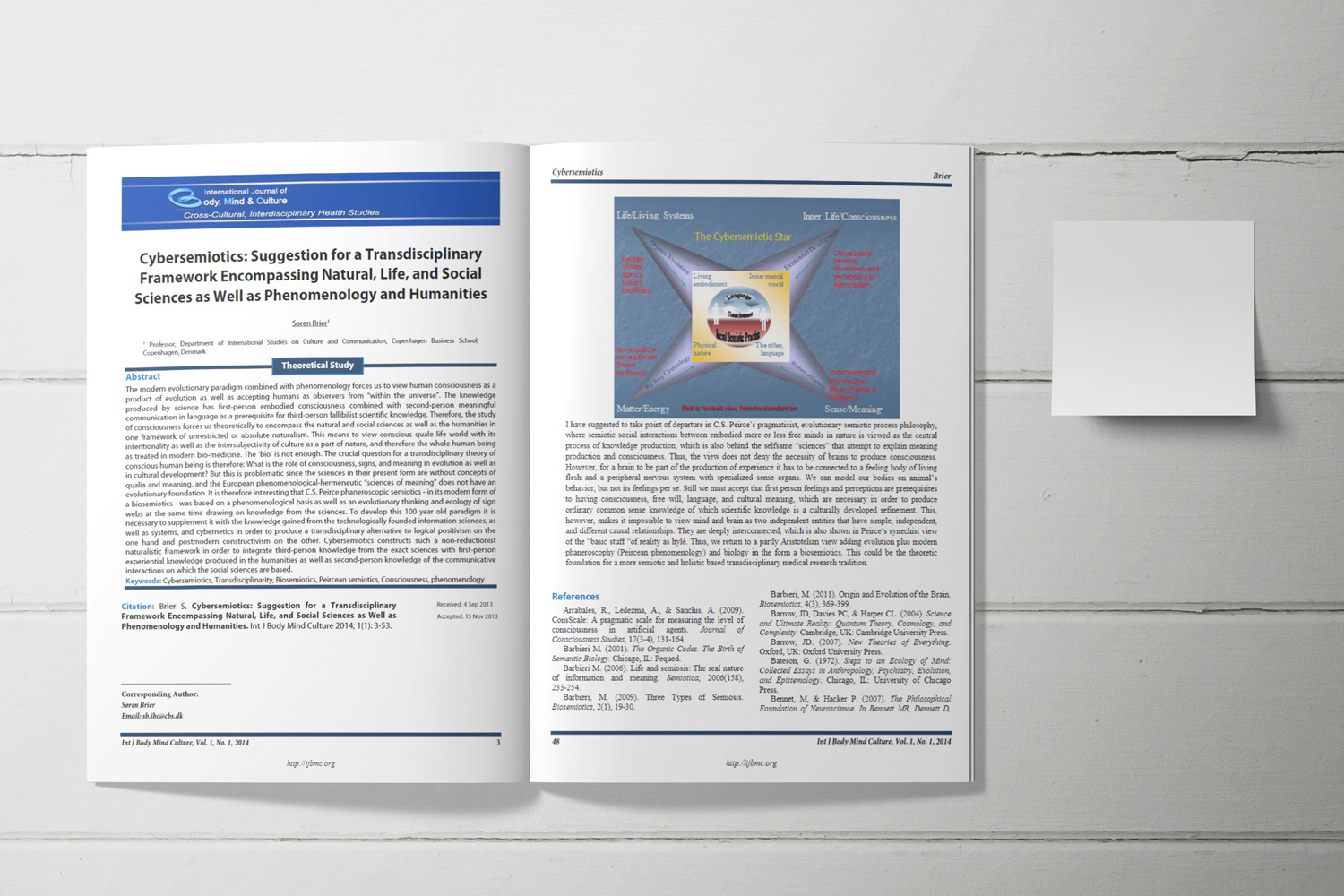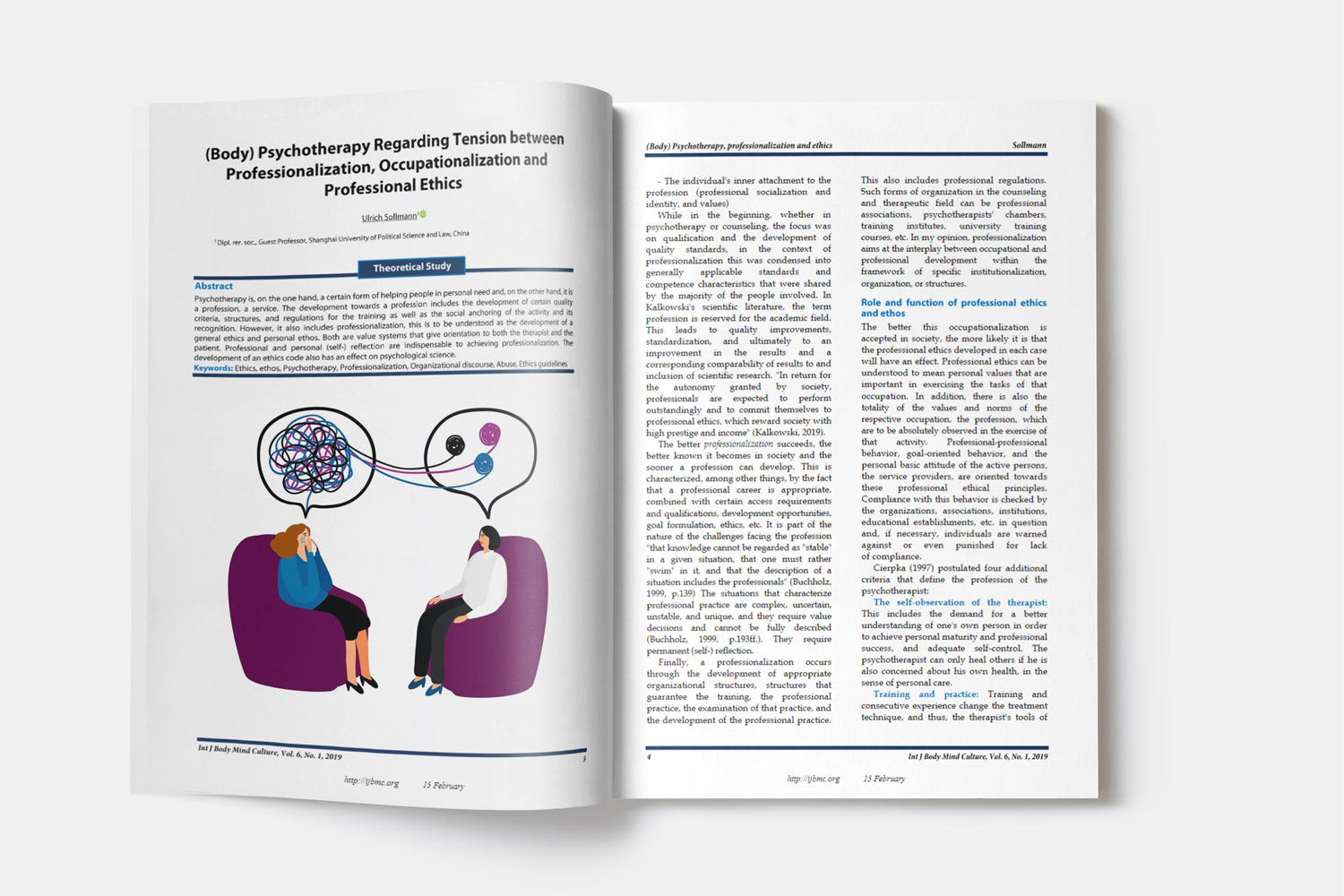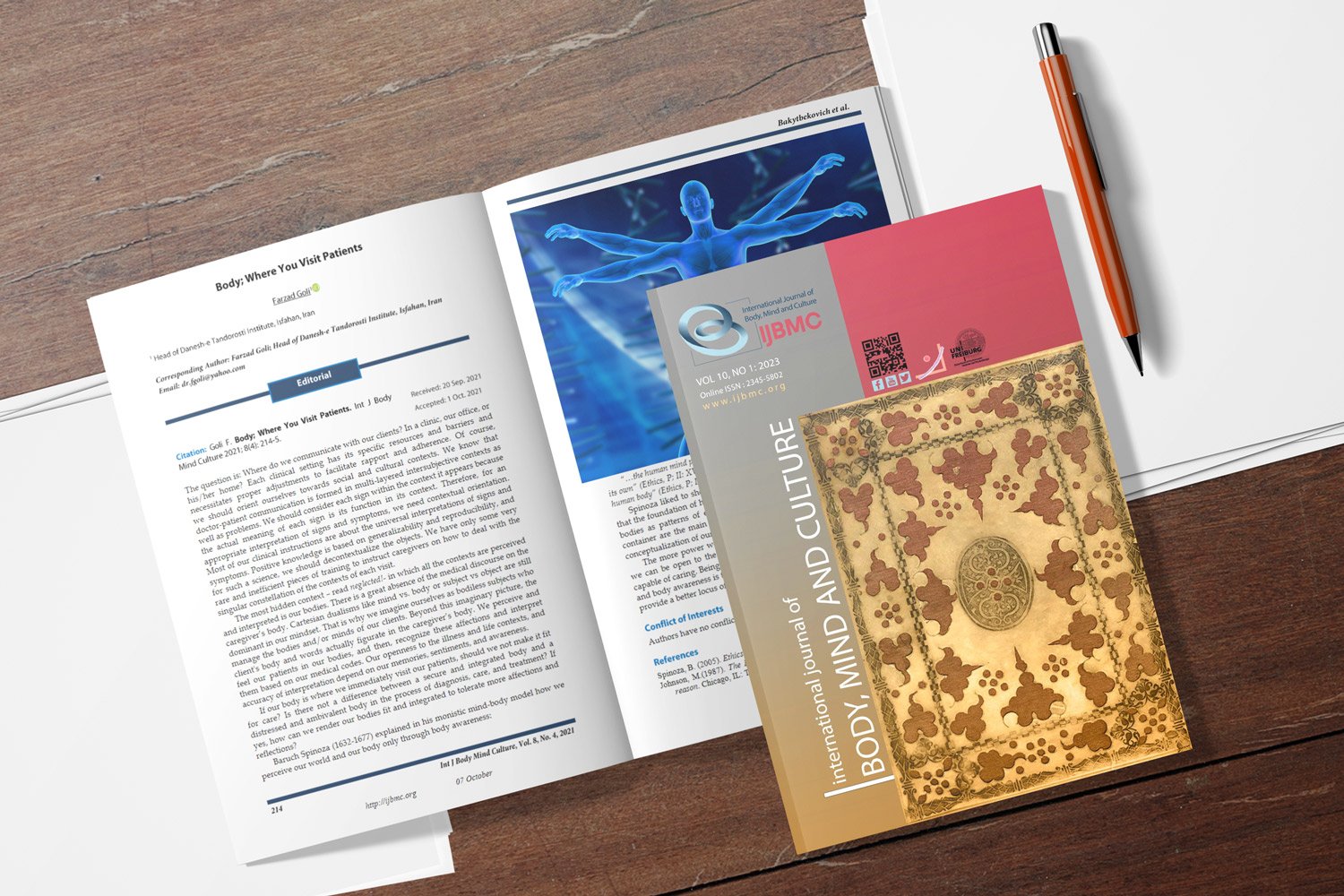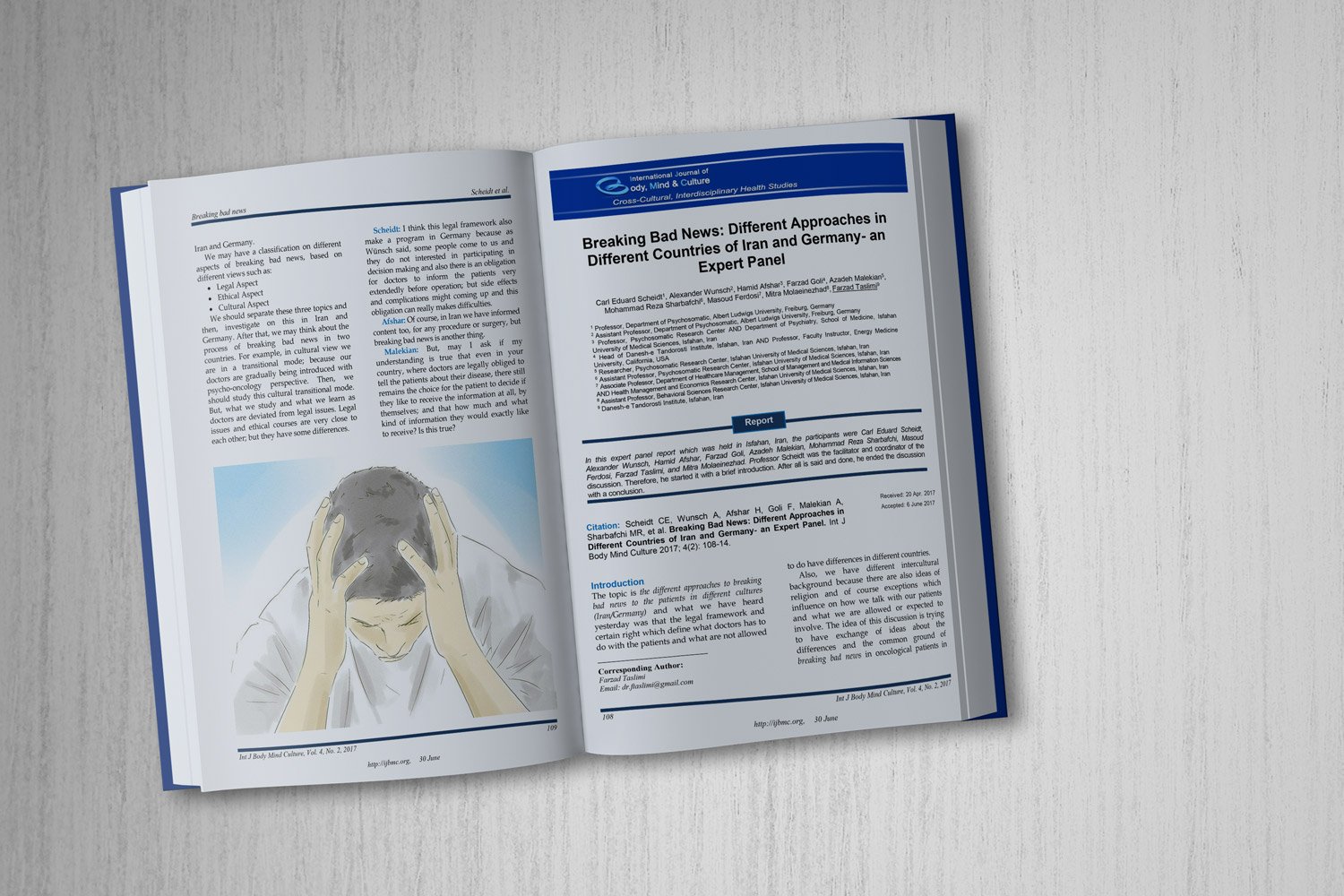Replication of the "Social Rituals and Mental Health: A Novel Approach to Early Intervention in Mental Illness" Project in an Iranian Setting
Downloads
Background: The present study is a replication of a study designed by the University of Western Australia (UWA). The hypothesis examined is that the deteriorating mental functioning which occurs during early stages of mental illness is recognizable in the form of altered sensitivity to expected rituals and an altered ability to perform the rituals appropriately. The present study aimed to evaluate the cultural applicability and feasibility of the Social Rituals Interview Schedule (SRIS) within the Iranian culture, and to assemble a culture-specific repertoire of social rituals in Iran. In addition, it aimed to examine the extent to which disturbances in everyday expected social rituals can be used for the early identification of individuals, families, and communities who have, or are at risk of soon developing, poor mental health.
Methods: The SRIS domains of social rituals were discussed in an expert focus group discussion and during key informant interviews with mental health patients and their care-givers.
Results: The concept of social rituals was acknowledged as being applicable and relevant in detecting early alterations in one's mental health condition. All domains of the SRIS were also confirmed as culturally applicable in the Iranian setting. A new domain named "Religious Rituals" was added to the domains already identified by UWA researchers as a significant and culturally sensitive domain of the social rituals in Iran. A culturally modified Farsi version of the SRIS -applicable and valid for use within the Iranian culture- was produced.
Conclusion: Both the social rituals concept and the produced Farsi version of its Interview schedule were regarded as culturally applicable to provide a foundation for planning prospective tools for early recognition of mental health deterioration in Iranian settings.
Downloads
Bentall, R. P., & Morrison, A. P. (2002). More harm than good: the case against using anti-psychotic drugs to prevent severe mental illness. J Ment Health, 11(4), 351-356. doi:10.1080/09638230020023723
Bleuler, E. (1950). Dementia praecox; or, The group of schizophrenias. New York, NY: International Universities.
Brown, D. (1991). Human universals. New York, NY: McGraw-Hill Humanities.
Bryant, R. A. (2007). Early intervention for post-traumatic stress disorder. Early.Interv.Psychiatry, 1(1), 19-26. doi:10.1111/j.1751-7893.2007.00006.x [doi]. Retrieved from PM:21352105
Cannon, T. D., Cornblatt, B., & McGorry, P. (2007). The empirical status of the ultra high-risk (prodromal) research paradigm. Schizophr.Bull., 33(3), 661-664. doi:sbm031 [pii];10.1093/schbul/sbm031 [doi]. Retrieved from PM:17470445
Corcoran, C., Malaspina, D., & Hercher, L. (2005). Prodromal interventions for schizophrenia vulnerability: the risks of being "at risk". Schizophr.Res, 73(2-3), 173-184. doi:S0920-9964(04)00218-X [pii]; 10.1016/j.schres. 2004.05.021 [doi]. Retrieved from PM:15653260
Correll, C. U., Penzner, J. B., Lencz, T., Auther, A., Smith, C. W., Malhotra, A. K. et al. (2007). Early identification and high-risk strategies for bipolar disorder. Bipolar.Disord., 9(4), 324-338. doi:BDI487 [pii];10.1111/j.1399-5618.2007.00487.x [doi]. Retrieved from PM:17547579
Fava, G. A. (1999). Subclinical symptoms in mood disorders: pathophysiological and therapeutic implications. Psychol Med, 29(1), 47-61. Retrieved from PM:10077293
Fava, G. A., & Kellner, R. (1991). Prodromal symptoms in affective disorders. Am J Psychiatry, 148(7), 823-830. Retrieved from PM:2053620
Grange, D.L. & Loeb, K.L. (2007). Early identification and treatment of eating disorders: prodrome to syndrome. Early.Interv.Psychiatry, 1(1), 27-39. doi:10.1111/j.1751-7893.2007.00007.x [doi]. Retrieved from PM:21352106
Hauser, M., Pfennig, A., Ozgurdal, S., Heinz, A., Bauer, M., & Juckel, G. (2007). Early recognition of bipolar disorder. Eur.Psychiatry, 22(2), 92-98. doi:S0924-9338(06)00135-0 [pii];10.1016/j.eurpsy.2006.08.003 [doi]. Retrieved from PM:17142013
Henry, L. P., Harris, M. G., Amminger, G. P., Yuen, H. P., Harrigan, S. M., Lambert, M. et al. (2007). Early Psychosis Prevention and Intervention Centre long-term follow-up study of first-episode psychosis: methodology and baseline characteristics. Early.Interv.Psychiatry, 1(1), 49-60. doi:10.1111/j.1751-7893.2007.00008.x [doi]. Retrieved from PM:21352108
Hollander, E., & Benzaquen, S. D. (1997). The obsessive-compulsive spectrum disorders. Int Rev Psychiatry, 9(1), 99-110.
Hopkinson, G. (1965). The prodromal phase of the depressive psychosis. Psychiatr Neurol.(Basel.), 149, 1-6. Retrieved from PM:14291279
Kisely, S., Scott, A., Denney, J., & Simon, G. (2006). Duration of untreated symptoms in common mental disorders: association with outcomes: International study. Br.J Psychiatry, 189, 79-80. doi:189/1/79 [pii];10.1192/bjp.bp.105.019869 [doi]. Retrieved from PM:16816310
Kraepelin, E. (1921). Manic-depressive insanity and paranoia. Edinburgh, Scotland: E. & S. Livingstone.
Kraeplin, E. (1896). Psychiatric. Barth, Germany: Leipzig.
Larsen, T. K., Friis, S., Haahr, U., Joa, I., Johannessen, J. O., Melle, I. et al. (2001). Early detection and intervention in first-episode schizophrenia: a critical review. Acta Psychiatr Scand., 103 (5), 323-334. doi:acp131 [pii]. Retrieved from PM:11380302
Leifer, B. P. (2003). Early diagnosis of Alzheimer's disease: clinical and economic benefits. J Am Geriatr.Soc, 51(5 Suppl Dementia), S281-S288. doi:10.1046/j.1532-5415.5153.x [doi]. Retrieved from PM:12801384
Lieberman, J. A., Perkins, D., Belger, A., Chakos, M., Jarskog, F., Boteva, K. et al. (2001). The early stages of schizophrenia: speculations on pathogenesis, pathophysiology, and therapeutic approaches. Biol Psychiatry, 50(11), 884-897. doi:S0006322301013038 [pii]. Retrieved from PM:11743943
Marshall, M., Lewis, S., Lockwood, A., Drake, R., Jones, P., & Croudace, T. (2005). Association between duration of untreated psychosis and outcome in cohorts of first-episode patients: a systematic review. Arch Gen Psychiatry, 62(9), 975-983. doi:62/9/975 [pii];10.1001/archpsyc.62.9.975 [doi]. Retrieved from PM:16143729
Meares, A. (1959). The diagnosis of prepsychotic schizophrenia. Lancet, 1(7063), 55-58. Retrieved from PM:13621637
Merton, R. K. (1957). Social theory and social structure. Glencoe, IL: Free Press.
Morley, K. I., Hall, W. D., & Carter, L. (2004). Genetic screening for susceptibility to depression: can we and should we? Aust.N.Z.J Psychiatry, 38(1-2), 73-80. doi:1300 [pii]. Retrieved from PM:14731197
Olsen, K. A., & Rosenbaum, B. (2006). Prospective investigations of the prodromal state of schizophrenia: review of studies. Acta Psychiatr Scand., 113(4), 247-272. doi:ACP697 [pii];10.1111/j.1600-0447.2005.00697.x [doi]. Retrieved from PM:16638070
Perkins, D. O., Gu, H., Boteva, K., & Lieberman, J. A. (2005). Relationship between duration of untreated psychosis and outcome in first-episode schizophrenia: a critical review and meta-analysis. Am J Psychiatry, 162(10), 1785-1804. doi:162/10/1785 [pii];10.1176/appi.ajp.162.10.1785 [doi]. Retrieved from PM:16199825
Sullivan, H. S. (1994). The onset of schizophrenia. 1927. Am J Psychiatry, 151(6 Suppl), 134-139. Retrieved from PM:8192188
Taffa, N., Haimanot, R., Desalegn, S., Tesfaye, A. & Mohammed, K. (1999). Do parents and young people communicate on sexual matters? The situation of family life education (FLE) in a rural town in Ethiopia. Ethiopian Journal of Health Development, 13, 205-210.
Turner, E., Blodgett, W., Kahona, S., & Benwa, F. (1992). Experiencing ritual: a new interpretation of African healing. Philadelphia, PA: University of Pennsylvania Press.
van Gennep, A., Vizedon, M. B., & Caffee, G. L. (1961). The rites of passage. Chicago, IL: University of Chicago Press.
Yung, A. R., & McGorry, P. D. (1996). The prodromal phase of first-episode psychosis: past and current conceptualizations. Schizophr.Bull., 22(2), 353-370. Retrieved from PM:8782291.

This work is licensed under a Creative Commons Attribution-NonCommercial 4.0 International License.










